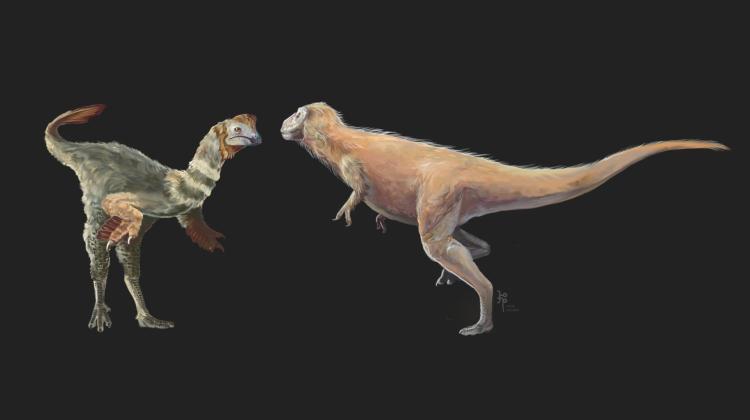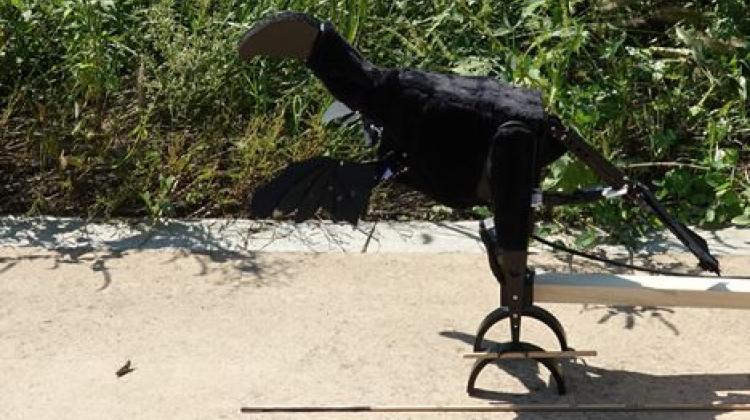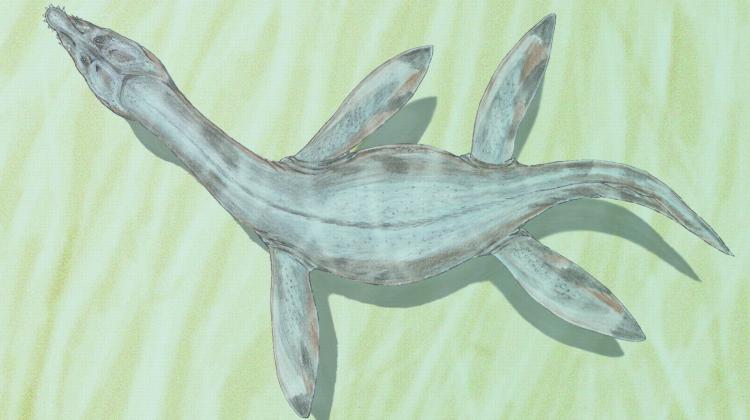Remains of 240-million-year-old predators found in Miedary
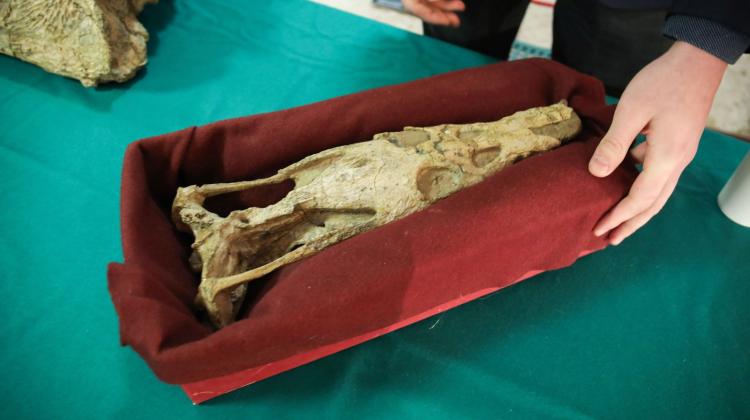 05.12.2023. Bones presented during a press conference at the Museum of Evolution of the Institute of Paleobiology of the Polish Academy of Sciences in Warsaw. The conference topic was 'Miedary - a new site of extinct vertebrates from 240 million years ago'. The conference was organized by the Institute of Paleobiology of the Polish Academy of Sciences. (sko) PAP/Albert Zawada
05.12.2023. Bones presented during a press conference at the Museum of Evolution of the Institute of Paleobiology of the Polish Academy of Sciences in Warsaw. The conference topic was 'Miedary - a new site of extinct vertebrates from 240 million years ago'. The conference was organized by the Institute of Paleobiology of the Polish Academy of Sciences. (sko) PAP/Albert Zawada
Polish scientists have discovered the remains of over 1,000 specimens of extinct animals dating back approximately 240 million years. Among them are the bones of a reptile previously unknown to science.
The unique discovery was made by a team of scientists from the Faculty of Biology of the University of Warsaw and the Institute of Paleobiology at the Polish Academy of Sciences working in Miedary near Tarnowskie Góry (Upper Silesia) made a unique discovery.
'We are conducting excavations in the area of an abandoned excavation of a former brickyard. The layers of red and green mudstones that we are exploring date back to the Middle Triassic. This is an important moment in the history of life on Earth because many groups of animals emerged then, including mammals, lizards and dinosaurs. This breakthrough moment in the prehistory of our planet is recorded in Miedary (Zbrosławice commune),’ Dr. Łukasz Czepiński from the Institute of Paleobiology at the Polish Academy of Sciences, co-author of the study, said at the press conference in Warsaw.
An article on the effects of the work in Miedary was published in the Journal of Vertebrate Paleontology. (10.1080/02724634.2023.2265445).
Describing the discovery as a 'world-scale event', Dr. Czepiński added that sites from the Middle Triassic are very rare. The nearest places with fossils of similar age are hundreds of kilometres away from Miedary.
Scientists from the University of Warsaw and the Polish Academy of Sciences have been working in this place for a decade and have already excavated thousands of bones.
The Earth looked very different during the Middle Triassic period than it does today. All landmasses were connected into one supercontinent, Pangea. In its eastern part, the Tethys Ocean formed a huge bay. The place that researchers are now exploring in Miedary was located in its southern part. The sea entered into and retreated from this vast depression several times, in cycles lasting many thousands of years.
'The animals we find in Miedary are buried in marine sediments. The bones are found in approximately one metre thick layers,’ says co-author of the project Wojciech Pawlak from the Faculty of Biology at the University of Warsaw.
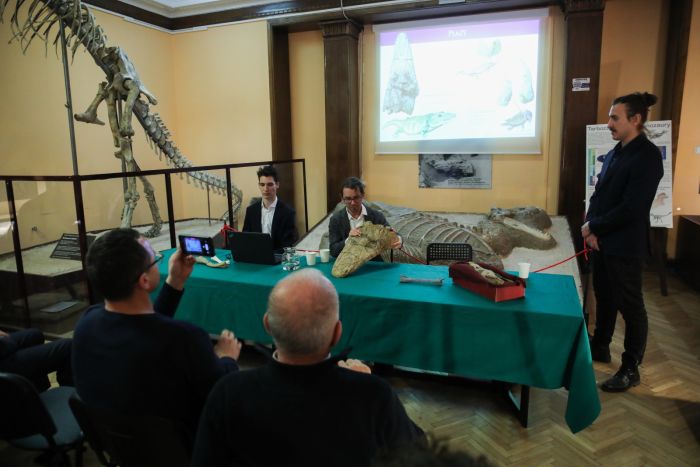
The organisms whose remains were discovered in Silesia include four species of small sharks (including Acrodus and Polycrodus), some with horns and spines on their fins. In the mudstones, researchers also found fossils of bony fish, including a one metre long Saurichthys with a lanceolate body. They also discovered bones of a 6-metre-long crocodile-like amphibian Mastodonsaur, and a fish-eating reptile Tanystropheus, of a similar size, which had an exceptionally long neck with 13 vertebrae. Its remains are accumulated in Miedary in quantities unseen anywhere else in the world.
'Based on the species composition of this assemblage, it appears that we are dealing with a very special environment, rarely identified in the fossil record. The bay did not have the salinity typical of either freshwater or saltwater reservoirs. In this respect, it was probably similar to today's Baltic Sea,’ says Pawlak.
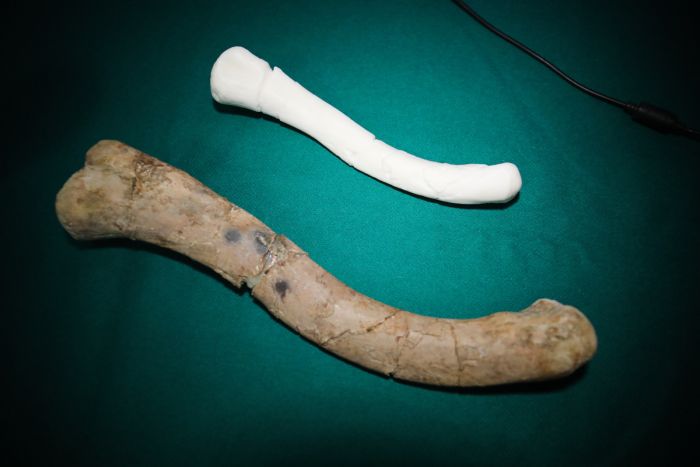
In total, the scientists discovered fossils of 24 species of fish, amphibians and reptiles. One of the most valuable finds from Miedary are the bones of a mysterious, armoured relative of dinosaurs and crocodiles.
'We are still collecting fossils of this animal; there are many indications that they are scattered bones of one individual. We hope that in the coming years we will find more specific remains, for example a skull. However, we already know that this is a new type of reptile that has not been anywhere else in the world,’ Dr. Czepiński told PAP.
'The abundance of bones in these layers is huge, and the remains are perfectly, three-dimensionally preserved. Although the animals discovered there are mostly known to science, the site in Miedary provides material that will allow us to learn much more about them. Thanks to the unprecedented amount of fossils, we will be able to conduct field work there for many years. Our dream is for these remains to become part of permanent exhibitions in Warsaw and Miedary,’ Pawlak adds. (PAP)
PAP - Science in Poland, Anna Bugajsk
abu/ zan/ kap/
tr. RL
Przed dodaniem komentarza prosimy o zapoznanie z Regulaminem forum serwisu Nauka w Polsce.





